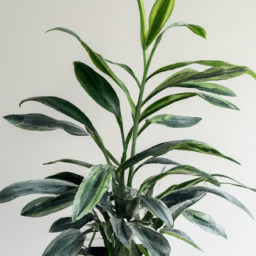
Understanding the Importance of Indoor Plant Lighting
Introduction
Indoor plants not only add beauty to our homes and offices but also provide numerous health benefits. However, to ensure their proper growth and development, it is crucial to understand the importance of indoor plant lighting. Light plays a vital role in the photosynthesis process, where plants convert light energy into chemical energy to fuel their growth. In this article, we will delve into the basics of indoor plant lighting, exploring the different types of light, their intensity requirements, and how to provide optimal lighting conditions for your indoor plants.
The Different Types of Light
When it comes to indoor plant lighting, not all light is created equal. Different types of light have varying effects on plant growth and development. Let’s explore the three primary types of light that are crucial for indoor plants:
1. Natural Light
Natural light is the most ideal source of light for indoor plants. It provides a broad spectrum of wavelengths that plants need for photosynthesis. South-facing windows are particularly beneficial as they receive the most sunlight throughout the day. However, it’s important to consider factors such as the direction your windows face, the presence of obstructions, and the duration of direct sunlight exposure to determine if natural light alone is sufficient for your plants.
2. Artificial Light
Artificial light sources, such as fluorescent lights, LED grow lights, and high-intensity discharge (HID) lights, are commonly used to supplement natural light or provide the sole source of light for indoor plants. These lights can be tailored to emit specific wavelengths that are most beneficial for plant growth. Fluorescent lights are cost-effective and suitable for most indoor plants, while LED grow lights are energy-efficient and can be adjusted to different color spectrums. HID lights, on the other hand, are more suitable for larger indoor gardens due to their high intensity.
3. Duration and Intensity
Aside from the type of light, the duration and intensity of light exposure also play a crucial role in indoor plant growth. Most indoor plants require 12 to 16 hours of light per day to thrive. However, it’s important to strike a balance and ensure they also have a period of darkness for rest. The intensity of light needed varies depending on the plant species, with some requiring high-intensity light and others thriving in lower light conditions. Understanding the specific light requirements of your plants is essential to provide optimal lighting conditions.
Providing Optimal Lighting Conditions
Now that we have a basic understanding of the importance of indoor plant lighting and the different types of light, let’s explore how to provide optimal lighting conditions for your indoor plants:
1. Assess Your Space
Start by assessing the available natural light in your space. Identify the direction your windows face and consider any obstructions that may block sunlight. This will help you determine if additional artificial lighting is necessary and which types of lights would be most suitable.
2. Choose the Right Light Source
Based on your assessment, decide whether you need to supplement natural light with artificial lighting or rely solely on artificial light. Consider factors such as cost, energy efficiency, and the specific light requirements of your plants. Fluorescent lights and LED grow lights are popular options for most indoor plants, while HID lights are more suitable for larger gardens.
3. Position the Lights Correctly
Once you have chosen the light source, position the lights correctly to ensure even light distribution. Place them at an appropriate distance from your plants, considering their intensity and heat output. It’s important to regularly monitor your plants for any signs of light stress, such as leaf burn or elongation, and adjust the light position accordingly.
4. Set the Light Duration
Establish a consistent light schedule for your indoor plants. Most plants require 12 to 16 hours of light per day, but be sure to provide a period of darkness for rest as well. Use timers to automate the light schedule and ensure your plants receive consistent lighting.
5. Monitor and Adjust
Regularly monitor your plants for signs of light deficiency or excess. If your plants appear leggy or have pale leaves, it may indicate a lack of light. On the other hand, if they have burnt or discolored leaves, it may indicate excessive light exposure. Adjust the light duration and intensity accordingly to provide the optimal lighting conditions for your plants.
Conclusion
Understanding the importance of indoor plant lighting is essential for the successful growth and development of your indoor plants. By providing the right types of light, adjusting the duration and intensity, and monitoring your plants’ response, you can create optimal lighting conditions that promote lush and healthy indoor greenery. Remember to assess your space, choose the right light source, position the lights correctly, set the light duration, and regularly monitor and adjust to ensure your plants thrive in their indoor environment.
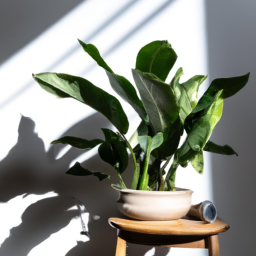
Different Types of Indoor Plant Lighting Systems
Introduction
Indoor plant lighting is essential for the growth and health of your plants. While natural sunlight is the best source of light for plants, it may not always be available, especially in indoor settings. This is where artificial lighting systems come into play. In this article, we will explore the different types of indoor plant lighting systems and their benefits.
1. Incandescent Lights
Incandescent lights are the most common and readily available type of indoor plant lighting. These lights emit a warm, yellowish light that is suitable for plants in the flowering stage. However, they are not ideal for plants in the vegetative stage as they lack the necessary blue light spectrum. Incandescent lights also tend to generate a significant amount of heat, which may require additional ventilation to prevent plant damage.
Despite their limitations, incandescent lights are affordable and can be used as supplemental lighting for specific plant needs. They are also suitable for small-scale indoor gardens or for providing localized light to specific plants.
2. Fluorescent Lights
Fluorescent lights are a popular choice for indoor plant lighting due to their energy efficiency and versatility. There are two main types of fluorescent lights: compact fluorescent lights (CFLs) and tube fluorescent lights (T5 or T8).
CFLs are a compact version of traditional fluorescent lights and are available in various color temperatures. They produce a balanced light spectrum that is suitable for both vegetative and flowering stages of plant growth. CFLs are also relatively affordable and can be used in combination with other types of lighting systems.
Tube fluorescent lights, on the other hand, offer higher light output and are often used in larger indoor gardens. They are available in different lengths and color temperatures, allowing for customization based on specific plant requirements. Tube fluorescent lights are ideal for providing uniform lighting across a larger area and can be used as the primary light source for indoor gardens.
3. High-Intensity Discharge (HID) Lights
HID lights are the go-to choice for serious indoor gardeners due to their high light output and efficiency. There are two main types of HID lights: metal halide (MH) and high-pressure sodium (HPS) lights.
Metal halide lights emit a blue light spectrum that is ideal for the vegetative stage of plant growth. They promote compact and leafy growth, making them suitable for plants that require intense lighting during this stage. Metal halide lights are commonly used in combination with HPS lights to provide a balanced light spectrum throughout the entire growth cycle.
High-pressure sodium lights emit a yellowish-orange light spectrum that is suitable for the flowering stage of plant growth. They promote blooming and fruiting, making them ideal for plants in this stage. High-pressure sodium lights are often used in combination with metal halide lights to provide a balanced light spectrum throughout the entire growth cycle.
HID lights require additional equipment such as ballasts and reflectors for optimal performance. They also generate a significant amount of heat, which may require proper ventilation and cooling systems to prevent plant damage.
Conclusion
Choosing the right indoor plant lighting system is crucial for the success of your indoor garden. Each type of lighting system has its own advantages and limitations, so it’s important to consider your specific plant requirements and budget. Whether you opt for incandescent lights, fluorescent lights, or HID lights, providing your plants with the right amount and spectrum of light will ensure healthy growth and abundant harvests.
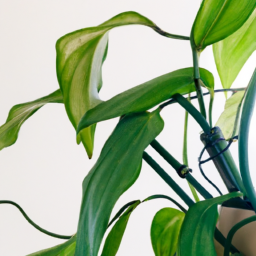
Choosing the Right Light Intensity for Indoor Plants
Introduction
Indoor plants bring life and beauty to any space, but to thrive and flourish, they require the right amount of light. Light intensity plays a crucial role in the growth and development of indoor plants, as it directly affects their photosynthesis process. In this guide, we will explore the basics of indoor plant lighting and help you understand how to choose the right light intensity for your beloved green companions.
The Importance of Light Intensity
Light intensity refers to the amount of light a plant receives, and it is measured in foot-candles or lux. Different plants have varying light intensity requirements, and providing them with the appropriate level of light is essential for their overall health. Insufficient light can lead to weak and leggy growth, while excessive light can cause leaf burn and other damage.
1. Assessing Light Intensity
To determine the light intensity in a specific area, you can use a light meter or smartphone apps specifically designed for this purpose. Place the meter or phone at the same height as your plants and measure the light intensity in foot-candles or lux. This will give you a baseline understanding of the current light conditions.
2. Understanding Light Levels
Different plants have different light requirements, categorized into low, medium, and high light levels. Understanding these levels will help you choose the right plants for your space and provide them with suitable light conditions.
Low Light Plants
Low light plants can thrive in areas with minimal natural light or artificial light sources. These plants are perfect for rooms with few windows or spaces far from natural light sources. Examples of low light plants include the Snake Plant, ZZ Plant, and Pothos. They typically require around 50-250 foot-candles or 500-2,500 lux.
Medium Light Plants
Medium light plants need more light than low light plants but can still tolerate lower light conditions. They are best placed near a north-facing window or a few feet away from an east or west-facing window. Some examples of medium light plants are the Spider Plant, Peace Lily, and Philodendron. These plants generally require around 250-1000 foot-candles or 2,500-10,000 lux.
High Light Plants
High light plants thrive in bright, direct light and need several hours of direct sunlight each day. They are ideal for south-facing windows or areas where they can receive intense light. Examples of high light plants include the Fiddle Leaf Fig, Bird of Paradise, and Aloe Vera. These plants typically require around 1000-2000 foot-candles or 10,000-20,000 lux.
3. Adjusting Light Intensity
If you find that your plants are not receiving adequate light, there are several ways to adjust the light intensity and ensure their healthy growth.
Increasing Light Intensity
To increase light intensity, you can place your plants closer to a light source, such as a window or artificial grow light. You may also consider using reflective surfaces, like mirrors or aluminum foil, to redirect and amplify the available light. Additionally, rotating your plants regularly will ensure all sides receive equal light exposure.
Decreasing Light Intensity
If your plants are getting too much light, you can move them slightly away from the light source or provide them with a sheer curtain to filter the intensity. This will help protect the leaves from potential damage caused by excessive light exposure.
Supplementing with Artificial Light
In situations where natural light is limited or insufficient, supplementing with artificial light sources can be a great solution. LED grow lights are highly recommended for indoor plants, as they provide the necessary light spectrum and can be adjusted to meet specific plant requirements. When using artificial lights, ensure they are positioned at the correct distance from the plants to avoid light burn or inadequate exposure.
Conclusion
Choosing the right light intensity for your indoor plants is vital for their growth and overall well-being. By assessing the light intensity, understanding different light levels, and adjusting as needed, you can create an optimal environment for your plants to thrive. Remember to regularly monitor the light conditions and make necessary adjustments to ensure your green companions receive the light they need to flourish. Happy growing!
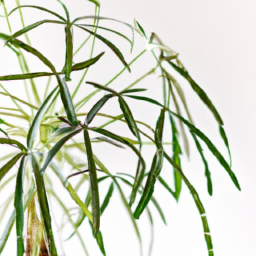
Creating a Proper Lighting Schedule for Indoor Plants
Introduction
Indoor plants require proper lighting to thrive and grow. While natural sunlight is the best source of light for plants, it may not always be available or sufficient. That’s where artificial lighting comes in. In this guide, we will walk you through the basics of creating a proper lighting schedule for your indoor plants, ensuring they receive the right amount and intensity of light for optimal growth.
Understanding Light Requirements
Before diving into creating a lighting schedule, it’s important to understand the light requirements of different indoor plants. Some plants thrive in bright, direct light, while others prefer indirect or low-light conditions. Research and identify the specific light needs of your plants to provide them with the best care possible.
1. Assessing Light Intensity
To determine the light intensity, you can use a light meter or rely on your own judgment. High-light plants typically require around 2000 to 5000 foot-candles (fc) of light, while medium-light plants need about 1000 to 2000 fc. Low-light plants can thrive with as little as 50 to 100 fc. Understanding the light intensity requirements will help you choose the right artificial lighting setup.
2. Evaluating Light Duration
The duration of light exposure is equally important for indoor plants. Most plants require a minimum of 12 to 16 hours of light per day, mimicking the natural daylight cycle. However, some plants, like succulents or cacti, benefit from shorter periods of light exposure. It’s crucial to research the specific light duration needs for each plant species you own.
3. Considering Light Spectrum
Light spectrum refers to the different colors of light emitted by various light sources. Plants primarily utilize red and blue light for photosynthesis. While natural sunlight provides a balanced spectrum, artificial lights may require additional considerations. Full-spectrum LED grow lights are an excellent choice as they provide a wide range of wavelengths necessary for plant growth. Avoid using regular incandescent or fluorescent bulbs as they lack the essential spectrum for optimal plant development.
Creating a Lighting Schedule
Now that you have a good understanding of your indoor plants’ light requirements, it’s time to create a lighting schedule that suits their needs. Here’s a step-by-step guide to help you develop an effective schedule:
1. Determine the Light Source
Choose the appropriate artificial light source based on the light intensity and spectrum requirements of your plants. LED grow lights are highly recommended due to their energy efficiency and customizable spectrum options. Position the lights at an appropriate distance from the plants to ensure even coverage.
2. Set the Light Duration
Consider the natural daylight cycle and set your lighting schedule accordingly. Most plants require a minimum of 12 hours of light per day, but some may need longer exposure. Use timers to automate the lighting schedule and maintain consistency. Avoid exposing plants to light during their natural resting period, usually at night.
3. Monitor and Adjust
Regularly monitor your plants’ response to the lighting schedule. Observe their growth, foliage color, and overall health. If you notice signs of stress, such as leaf discoloration or wilting, it may indicate inadequate or excessive light exposure. Adjust the light duration or intensity accordingly to cater to the specific needs of your plants.
4. Consider Seasonal Changes
Keep in mind that the lighting requirements of indoor plants may vary with the changing seasons. During winter or in regions with limited sunlight, you may need to increase the light duration or intensity to compensate for the reduced natural light. Similarly, in summer or areas with intense sunlight, you may need to provide shade or adjust the light distance to prevent scorching.
Conclusion
Creating a proper lighting schedule for your indoor plants is essential for their growth and overall well-being. By understanding the light intensity, duration, and spectrum requirements of your plants, you can provide them with the optimal conditions they need to thrive. Remember to regularly monitor and adjust the lighting schedule as needed, and consider seasonal changes to ensure your plants receive the best care possible. With a well-planned lighting schedule, your indoor plants will flourish and bring beauty to your living space.
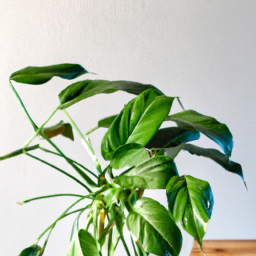
Common Mistakes to Avoid in Indoor Plant Lighting
Introduction
Indoor plants can bring life and beauty to any space, but providing them with the right lighting is crucial for their growth and overall health. While many people understand the importance of light for plants, there are common mistakes that can hinder their success. In this guide, we will explore the basics of indoor plant lighting and highlight five common mistakes to avoid. By understanding these mistakes, you can ensure that your indoor plants thrive and flourish.
1. Insufficient Light
One of the most common mistakes in indoor plant lighting is providing insufficient light. Many indoor plants require bright, indirect light to thrive. Placing your plants too far away from a light source or in a room with low light levels can lead to weak and leggy growth. To avoid this mistake, assess the light levels in your space and choose plants that can tolerate lower light conditions if necessary.
Additionally, consider using artificial lighting options like fluorescent or LED grow lights to supplement natural light. These lights can provide the necessary spectrum of light for optimal plant growth. Position the lights close to the plants, ensuring they receive adequate light intensity for the duration recommended for their specific species.
Remember to adjust the lighting as the seasons change. In winter, when natural light levels are lower, you may need to increase the duration or intensity of artificial lighting to compensate.
2. Using the Wrong Light Spectrum
Another mistake to avoid is using the wrong light spectrum for your indoor plants. Different plants have varying light requirements, and using the wrong spectrum can hinder their growth. Most plants require a combination of blue and red light for optimal photosynthesis.
Blue light promotes leafy growth, while red light stimulates flowering and fruiting. Therefore, it is essential to choose lighting options that provide both spectrums. Full-spectrum LED grow lights are a popular choice as they emit a balanced light spectrum that mimics natural sunlight.
When selecting light bulbs or grow lights, check the packaging for information on the light spectrum they emit. This will help you choose the right lights for your specific plant species and ensure they receive the necessary light for their growth and development.
3. Neglecting Light Duration and Timing
The duration and timing of light exposure are crucial factors in indoor plant lighting. Many plants require a specific amount of darkness each day to trigger essential processes like flowering and dormancy. Providing continuous light without any dark periods can disrupt these natural cycles and negatively impact plant health.
Research the light requirements of your specific plant species to determine the optimal duration and timing of light exposure. Some plants may require up to 12-16 hours of light per day, while others may need less. Use timers or smart lighting systems to automate the light cycle and ensure consistency.
It is also important to avoid sudden changes in light exposure. Gradually adjust the light duration or intensity over a period of days or weeks to prevent shock or stress to your plants.
Conclusion
Indoor plant lighting is a crucial aspect of successful plant care. By avoiding common mistakes such as insufficient light, using the wrong light spectrum, and neglecting light duration and timing, you can provide your indoor plants with the ideal lighting conditions for their growth and overall well-being.
Remember to regularly assess the light levels in your space, adjust artificial lighting as needed, and choose plants that match the available light conditions. With proper lighting, your indoor plants will thrive and bring beauty and vitality to your home or office.
Frequently Asked Questions (FAQ)
1. What is indoor plant lighting?
Indoor plant lighting refers to the artificial light sources used to provide the necessary light energy for plants to grow indoors.
2. Why is indoor plant lighting important?
Indoor plant lighting is important because it helps plants receive the light energy they need for photosynthesis, which is crucial for their growth and overall health.
3. What types of indoor plant lighting are available?
There are various types of indoor plant lighting available, including fluorescent lights, LED grow lights, and high-intensity discharge (HID) lights.
4. Which type of indoor plant lighting is the best?
The best type of indoor plant lighting depends on the specific needs of your plants. LED grow lights are popular due to their energy efficiency and customizable light spectrum.
5. How long should indoor plants be exposed to light?
The duration of light exposure for indoor plants depends on the specific plant species. Generally, most plants require around 12-16 hours of light per day for optimal growth.
6. Can I use regular household bulbs for indoor plant lighting?
Regular household bulbs are not ideal for indoor plant lighting as they often lack the necessary light spectrum required for plant growth. It is recommended to use specialized plant grow lights.
7. How close should indoor plant lights be to the plants?
The distance between indoor plant lights and plants depends on the type of light source. As a general guideline, LED grow lights can be placed 12-24 inches away, while fluorescent lights may need to be closer, around 6-12 inches.
8. Do indoor plants need darkness at night?
Yes, indoor plants require a period of darkness at night for proper rest and to mimic their natural light cycles. It is recommended to provide around 8 hours of uninterrupted darkness for most plants.
9. Can I use natural sunlight for indoor plant lighting?
Natural sunlight can be used as a source of indoor plant lighting, but it may not always be sufficient, especially in areas with limited sunlight or during certain seasons. Supplementing with artificial lighting is often necessary.
10. Are there any risks associated with indoor plant lighting?
While indoor plant lighting is generally safe, it is important to avoid overexposure to intense light sources, as this can lead to plant stress or damage. It is also essential to follow manufacturer instructions and safety guidelines when using artificial lighting systems.

James Wong is a renowned ethnobotanist, plant scientist, and local television presenter. With a passion for demystifying plant science, he is known for translating complex botanical concepts into practical advice for everyday plant enthusiasts. James’s expertise spans from traditional gardening to cutting-edge plant technologies, making his insights accessible and informative.


